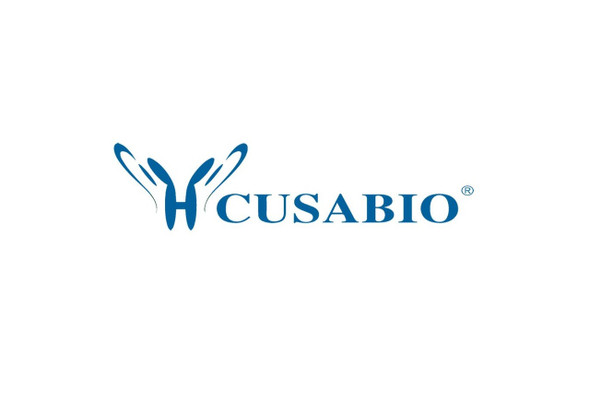Cusabio Candida albicans Recombinants
Recombinant Candida albicans pH-regulated antigen PRA1 (PRA1) | CSB-YP308545CZD
- SKU:
- CSB-YP308545CZD
- Availability:
- 3 - 7 Working Days
Description
Recombinant Candida albicans pH-regulated antigen PRA1 (PRA1) | CSB-YP308545CZD | Cusabio
Alternative Name(s): 58 kDa fibrinogen-binding mannoprotein FBP1
Gene Names: PRA1
Research Areas: Signal Transduction
Organism: Candida albicans (strain SC5314 / ATCC MYA-2876) (Yeast)
AA Sequence: APVTVTRFVDASPTGYDWRADWVKGFPIDSSCNATQYNQLSTGLQEAQLLAEHARDHTLRFGSKSPFFRKYFGNETASAEVVGHFDNVVGADKSSILFLCDDLDDKCKNDGWAGYWRGSNHSDQTIICDLSFVTRRYLTQLCSSGYTVSKSKTNIFWAGDLLHRFWHLKSIGQLVIEHYADTYEEVLELAQENSTYAVRNSNSLIYYALDVYAYDVTIPGEGCNGDGTSYKKSDFSSFEDSDSGSDSGASSTASSSHQHTDSNPSATTDANSHCHTHADGEVHC
Source: Yeast
Tag Info: N-terminal 6xHis-tagged
Expression Region: 16-299aa
Sequence Info: Full Length of Mature Protein
MW: 33.4 kDa
Purity: Greater than 90% as determined by SDS-PAGE.
Relevance: Cell surface protein involved in the host-parasite interaction during candidal infection. With MP65, represents a major component of the biofilm matrix. Sequesters zinc from host tissue and mediates leukocyte adhesion and migration. As a surface protein, binds the two human complement regulators CFH and CFHR1, as well as plasminogen PLG, mediates complement evasion and extra-cellular matrix interaction and/or degradation. As a released protein, enhances complement control in direct vicinity of the yeast and thus generates an additional protective layer which controls host complement attack, assisting the fungus in escaping host surveillance. Binds to host fluid-phase C3 and blocks cleavage of C3 to C3a and C3b, leading to inhibition of complement activation. Mediates also human complement control and complement evasion through binding to C4BPA, another human complement inhibitor, as well as through binding to host integrin alpha-M/beta-2. Decreases complement-mediated adhesion, as well as uptake of C.albicans by human macrophages.
Reference: "Assembly of the Candida albicans genome into sixteen supercontigs aligned on the eight chromosomes." van het Hoog M., Rast T.J., Martchenko M., Grindle S., Dignard D., Hogues H., Cuomo C., Berriman M., Scherer S., Magee B.B., Whiteway M., Chibana H., Nantel A., Magee P.T. Genome Biol. 8:RESEARCH52.1-RESEARCH52.12(2007)
Storage: The shelf life is related to many factors, storage state, buffer ingredients, storage temperature and the stability of the protein itself. Generally, the shelf life of liquid form is 6 months at -20?/-80?. The shelf life of lyophilized form is 12 months at -20?/-80?.
Notes: Repeated freezing and thawing is not recommended. Store working aliquots at 4? for up to one week.
Function: Cell surface protein involved in the host-parasite interaction during candidal infection. With MP65, represents a major component of the biofilm matrix. Sequesters zinc from host tissue and mediates leukocyte adhesion and migration. As a surface protein, binds the two human complement regulators CFH and CFHR1, as well as plasminogen PLG, mediates complement evasion and extra-cellular matrix interaction and/or degradation. As a released protein, enhances complement control in direct vicinity of the yeast and thus generates an additional protective layer which controls host complement attack, assisting the fungus in escaping host surveillance. Binds to host fluid-phase C3 and blocks cleavage of C3 to C3a and C3b, leading to inhibition of complement activation. Mediates also human complement control and complement evasion through binding to C4BPA, another human complement inhibitor, as well as through binding to host integrin alpha-M/beta-2. Decreases complement-mediated adhesion, as well as uptake of C.albicans by human macrophages.
Involvement in disease:
Subcellular Location: Secreted
Protein Families: ZPS1 family
Tissue Specificity:
Paythway:
Form: Liquid or Lyophilized powder
Buffer: If the delivery form is liquid, the default storage buffer is Tris/PBS-based buffer, 5%-50% glycerol. If the delivery form is lyophilized powder, the buffer before lyophilization is Tris/PBS-based buffer, 6% Trehalose, pH 8.0.
Reconstitution: We recommend that this vial be briefly centrifuged prior to opening to bring the contents to the bottom. Please reconstitute protein in deionized sterile water to a concentration of 0.1-1.0 mg/mL.We recommend to add 5-50% of glycerol (final concentration) and aliquot for long-term storage at -20?/-80?. Our default final concentration of glycerol is 50%. Customers could use it as reference.
Uniprot ID: P87020
HGNC Database Link: N/A
UniGene Database Link: N/A
KEGG Database Link: KEGG
STRING Database Link: N/A
OMIM Database Link: N/A










